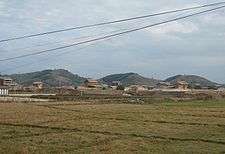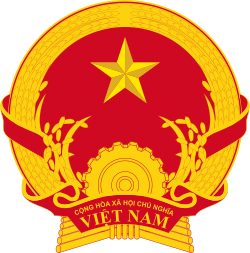Rural commune (Vietnam)
On the Third Tier, Vietnam is divided into 1,581 wards, 603 townships and 8,978 communes.[1] Ward (phường), together with Township (thị trấn) and Commune (Vietnamese: xã Chữ nôm:社) have an equal status under the Third Tier units.
The communes are subordinate to Provincial City, Town or Rural District (Vietnamese: huyện) as the Third Tier unit.
Fact

Certain small villages are not officially regarded as administrative communes.
As of December 31, 2008, Vietnam had 9,111 rural communes. Thanh Hoá Province contained the highest number of rural communes (586) amongst all province-level administrative units, followed by Nghệ An Province with 436 and Hanoi with 408. Đà Nẵng, with only 11 rural communes, contained the fewest. Counted together, the ten province-level administrative units containing the most rural communes—namely, Thanh Hoá (586), Nghệ An (436), Hanoi (408), Thái Bình (267), Phú Thọ (251), Hà Tĩnh (238), Hải Dương (234), Quảng Nam (210), Bắc Giang (207), and Lạng Sơn (207)—contain one-third of all the rural communes in Vietnam. Three of these are located in the Red River Delta region, three more in the Đông Bắc (Northeast) region, three in the Bắc Trung Bộ (North Central Coast) region, and one in the Nam Trung Bộ (South Central Coast) region.[2]
According to data extracted from General Statistics Office of Vietnam, there are 11164 third-level (commune-level) administrative subdivision. As of 2018 February, third-level administrative subdivision of Vietnam is 11162.[3]
History
In 1957, South Vietnamese President Ngo Dinh Diem launched a counter-insurgency project known as Strategic Hamlet Program, in order to isolate the rural Vietnamese from contact with and influence by the communist National Liberation Front (NLF). A number of "fortified villages", called "joint families" (Vietnamese: liên gia), were created throughout South Vietnam, consisting of villages that had been consolidated and reshaped to create a defensible perimeter. The peasants themselves would be given weapons and trained in self-defense. Several problems, including corruption, unnecessary amounts of forced relocation, and poor execution caused the program to backfire drastically, and ultimately led to a decrease in support for Diem's regime and an increase in sympathy for Communist efforts.
